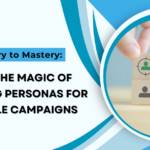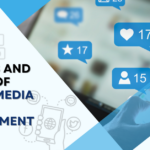Many people with mental health conditions are able to work and play an active role in their communities. But stigma and discrimination still exist, even though it’s now the 21st century. It shouldn’t happen, and yet it still does. Much like cancer, it’s insidious in its ugly spread, affecting people from all walks of life without regard to race, religion, gender, or sexual orientation. When we agree not to discriminate against others for a mental health condition or illness, we also agree to ensure their right to live free of discrimination. Therefore, how can you help reduce the stigma in the workplace and discrimination in organizations?
The Experiences Of Stigma In The Workplace
Stigma in the workplace refers to negative attitudes, behaviors, and discrimination that employees experience based on certain characteristics, such as their gender, race, sexual orientation, age, disability status, and other personal attributes. Unfortunately, it can cause people to be treated differently because of their disability or illness. Moreover, it can also lead to unfair hiring practices and policies that hurt job seekers and workers with disabilities.
Stigmatizing attitudes about mental illness are common in the Philippines. According to a survey conducted by the Philippine Psychiatric Association (PPA), stigma toward mental health remains prevalent in society. This attitude is reflected in the workplace, where people with mental health problems may face discrimination due to their disability.
The stigma that is attached to mental illness in the workplace is an issue that needs to be addressed. According to a National Center for Mental Health (NCMH) study, one out of three Filipino workers is affected by mental health issues. However, only one out of ten will seek professional help for these problems. This is due to fear of being discriminated against at work.
Removing Stigma And Discrimination
Workplace stigma is particularly damaging because it stops people from seeking help early and makes them feel ashamed and isolated – which only worsens their condition. These feelings can also make them less productive at work or even lead them to quit altogether.
It’s no secret that people with disabilities are severely underrepresented in the workforce. But there are steps employers can take to encourage greater inclusion and diversity, including removing stigma and discrimination:
- Increasing knowledge of mental health conditions
- Educating people about mental health conditions
- Changing social attitudes towards mental health conditions
- Providing support for people with mental health conditions
Working Towards A Better Mental Health Environment
To break the stigma and discrimination, we need to understand the experiences of people with mental health conditions. We can remove stigma and discrimination by focusing on the person, not their condition. It’s important to support people with mental health conditions. Moreover, promoting mental health at work is important to helping people feel included in their workplace. Hence, understanding people’s experiences with mental health conditions can help remove stigma and discrimination in the workplace.
Mental health is a topic that affects many people, including those without a mental health condition. There are many ways to remove stigma and discrimination in the workplace:
- Make it clear that you want to understand what it’s like for someone with a mental health condition at work
- Encourage open conversations about mental health
- Support resources for your employees (or other people who work near you) if they need support or information on understanding their own mental health or supporting others’ mental well-being.
Final Thoughts
Discrimination and stigma in the workplace can have a harmful impact on both individuals and organizations. It can lead to unfair treatment, lower productivity, and a negative work environment. Therefore, people with mental health conditions have a right to be treated fairly in the workplace. They should be able to do their job without being stigmatized and discriminated against because of their mental health condition. We’re all human beings and deserve respect, so let’s make sure we give it. Breaking discrimination and stigma in the workplace requires ongoing effort and commitment, but it can lead to a more positive and productive work environment for all employees.










